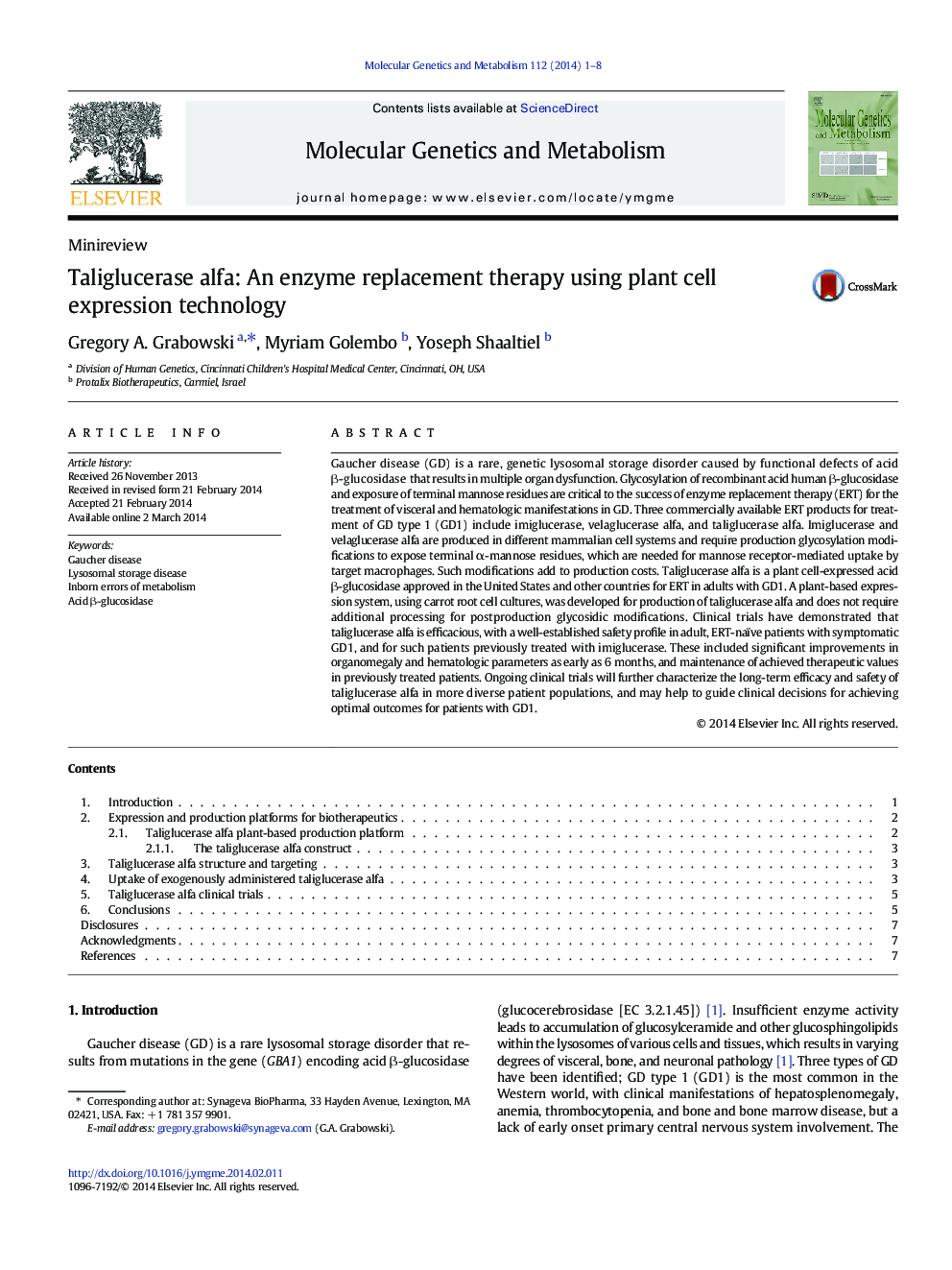| Article ID | Journal | Published Year | Pages | File Type |
|---|---|---|---|---|
| 10833077 | Molecular Genetics and Metabolism | 2014 | 8 Pages |
Abstract
Gaucher disease (GD) is a rare, genetic lysosomal storage disorder caused by functional defects of acid β-glucosidase that results in multiple organ dysfunction. Glycosylation of recombinant acid human β-glucosidase and exposure of terminal mannose residues are critical to the success of enzyme replacement therapy (ERT) for the treatment of visceral and hematologic manifestations in GD. Three commercially available ERT products for treatment of GD type 1 (GD1) include imiglucerase, velaglucerase alfa, and taliglucerase alfa. Imiglucerase and velaglucerase alfa are produced in different mammalian cell systems and require production glycosylation modifications to expose terminal α-mannose residues, which are needed for mannose receptor-mediated uptake by target macrophages. Such modifications add to production costs. Taliglucerase alfa is a plant cell-expressed acid β-glucosidase approved in the United States and other countries for ERT in adults with GD1. A plant-based expression system, using carrot root cell cultures, was developed for production of taliglucerase alfa and does not require additional processing for postproduction glycosidic modifications. Clinical trials have demonstrated that taliglucerase alfa is efficacious, with a well-established safety profile in adult, ERT-naïve patients with symptomatic GD1, and for such patients previously treated with imiglucerase. These included significant improvements in organomegaly and hematologic parameters as early as 6 months, and maintenance of achieved therapeutic values in previously treated patients. Ongoing clinical trials will further characterize the long-term efficacy and safety of taliglucerase alfa in more diverse patient populations, and may help to guide clinical decisions for achieving optimal outcomes for patients with GD1.
Related Topics
Life Sciences
Biochemistry, Genetics and Molecular Biology
Biochemistry
Authors
Gregory A. Grabowski, Myriam Golembo, Yoseph Shaaltiel,
